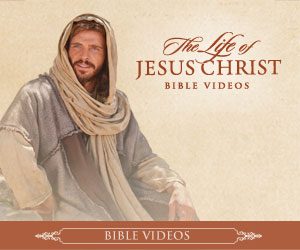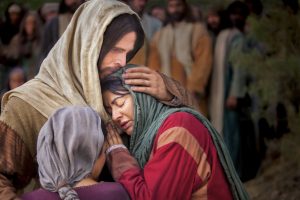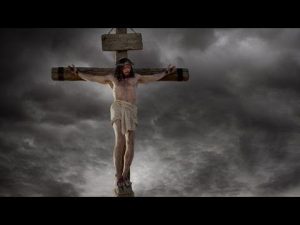In Hollywood but Not of Hollywood: Cecil B. DeMille, Paul Schrader, and the Evolving Spiritual Aesthetic of the Institutional films of the LDS Church, Part 2
Mark T. Lewis
[This is the second part of an article taken from Mark T. Lewis’s 2016 masters thesis, from Brigham Young University’s Department of Religious Studies, entitled “An Hungry Man Dreameth”: Transcendental Film Theory and Stylistic Trends in Recent Institutional Films of the LDS Church”. Part 1, about the religious film aesthetic of of Cecil B. DeMille, Paul Schrader, and the makers of The Testaments can be read here.]
New Directions
Though seemingly etched in stone, the prevailing status quo for religious filmmaking in Latter-day Saint culture need not belie an inability for aesthetic exploration. In the decade since Testaments, the Church has begun numerous new media initiatives, including but not limited to short documentary profiles of individual members;[1] a feature film focused on Joseph Smith; and short, shareable vignettes depicting the life of Jesus Christ. Stylistically, many of these films decline from the intensity of the DeMillian aesthetic present in Testaments, though there remains much that hearkens back to Hollywood’s aesthetic in general.
 Perhaps the most intriguing shift away from DeMille and towards Schrader came during the announcement of The Life of Jesus Christ Bible Videos (2011). These videos are based on short passages from the New Testament, filmed as vignettes, and uploaded to popular video-sharing websites, such as YouTube. The departure from previous stylistic practices is evident in more than the changed mode of distribution; in his announcement of the new videos at the 2011 First Presidency Christmas devotional, President Henry B. Eyring laid out the stylistic aim of the new project:
Perhaps the most intriguing shift away from DeMille and towards Schrader came during the announcement of The Life of Jesus Christ Bible Videos (2011). These videos are based on short passages from the New Testament, filmed as vignettes, and uploaded to popular video-sharing websites, such as YouTube. The departure from previous stylistic practices is evident in more than the changed mode of distribution; in his announcement of the new videos at the 2011 First Presidency Christmas devotional, President Henry B. Eyring laid out the stylistic aim of the new project:
The First Presidency has authorized the creation of a facility in the deserts of Utah in which scenes from the Savior’s ministry could be re-created and filmed. The objective in that effort has been to remain true to the scriptural text. Like the scriptures which these short films follow faithfully, they may seem to you quiet. Your faith and the Holy Ghost will create the emotion these world-changing events deserve.[2]
 Three intended stylistic shifts are noteworthy from President Eyring’s announcement. First, no fictional characters or scenes would be added, though creative license would certainly need to be taken to create a filmable, coherent scene. Second, the stylistic direction for these short videos was towards a simpler, “quiet” aesthetic. Third, and most important, the spiritual importance of each video would be established off screen—the spiritual would not necessarily be put “on” film as DeMille had done. The second and third changes suggested here by President Eyring indicate a shift that hints of Schrader’s assertion that classic DeMillian Hollywood drew too much attention to itself, obfuscating experiences that feed lasting spirituality.
Three intended stylistic shifts are noteworthy from President Eyring’s announcement. First, no fictional characters or scenes would be added, though creative license would certainly need to be taken to create a filmable, coherent scene. Second, the stylistic direction for these short videos was towards a simpler, “quiet” aesthetic. Third, and most important, the spiritual importance of each video would be established off screen—the spiritual would not necessarily be put “on” film as DeMille had done. The second and third changes suggested here by President Eyring indicate a shift that hints of Schrader’s assertion that classic DeMillian Hollywood drew too much attention to itself, obfuscating experiences that feed lasting spirituality.
The initial forays were similar to what President Eyring described—especially in terms of quiet. There was a noticeable scaling back of filmmaking spectacle. Angels did not descend and ascend in glorious pillars of light, but walked in and out of scenes as any other character.[3] The frequency of edits was significantly reduced, with many shorter videos taking place in a single shot.[4] Close-ups were absent and medium shots infrequent, keeping the observer at a distance that encouraged reflection instead of identification.[5] Slow motion and other camera-speed tricks were completely absent, leaving events to play out more naturally.[6] All considered, quiet seems an apt description of many of these vignettes because they sought to draw less attention to themselves, encouraging the viewer to think and observe without the distraction of overemotional sentimentality.
 This sense of quiet came to an impressive head in late March of 2012. In preparation for Easter, a number of videos concerning the suffering, death, and Resurrection of Jesus were released. Each video was markedly silent, without a single note of music or hint of non-diegetic sound.[7] At the Crucifixion, there were no close-ups of weeping faces, no swelling orchestras, no slow-motion shots, and no raging storms. The audience was left to gaze on Christ crucified in stark stillness as he whispered his final utterances from the cross. Amidst this cinematic reverence, the viewer was left to actively reflect—reaching beyond the screen in search of meaning.
This sense of quiet came to an impressive head in late March of 2012. In preparation for Easter, a number of videos concerning the suffering, death, and Resurrection of Jesus were released. Each video was markedly silent, without a single note of music or hint of non-diegetic sound.[7] At the Crucifixion, there were no close-ups of weeping faces, no swelling orchestras, no slow-motion shots, and no raging storms. The audience was left to gaze on Christ crucified in stark stillness as he whispered his final utterances from the cross. Amidst this cinematic reverence, the viewer was left to actively reflect—reaching beyond the screen in search of meaning.
This communion between a traditionally DeMille-oriented institution and a Schrader-like aesthetic was short-lived, however. Just prior to Easter, a compilation video was released that combined all of the Easter segments into a single video. With an orchestral score, a quicker narrative, and a heavier use of special effects—including an awkwardly misplaced thunderstorm looming above an improbably well-lit Jesus on a cross, quivering from an earthquake added in post-production—the stillness of the previous vignettes was lost.[8] In the individual segments, the editing remained largely unchanged, though non-diegetic music was added to each segment in the series.[9] What began as an exercise in quiet ended with the implementation of time-honored cues for emotion. The result, as Schrader warns, may be that the audience is so satiated by the abundance on screen that they fail to keep seeking. On the other hand, as DeMille discovered, the masses are thrilled and come back for more. Over the intervening year, the vast majority of these vignettes have included wall-to-wall music, regardless of the video’s length. Though there seem to have been broader intentions at the beginning of the Bible Videos project, there has been a return to a DeMillian aesthetic of spectacle, especially with regard to soundtrack.[10] This shift suggests that though there may have been some recent gradual moves away from the style of DeMille’s films, the habit of mirroring Hollywood remains.
Conclusion
There is little question that the DeMillian aesthetic is and was prominent throughout LDS institutional film history. Although Schrader is clearly in opposition to DeMille’s approach, it is foolhardy to dismiss DeMille and his aesthetic too swiftly. DeMille’s objectives were propagandistic and his productions have served that function well, drawing attention to and rekindling interest in the stories of Moses and Jesus from the Bible. Among Latter-day Saints, this approach has also had its benefits. The Testaments served its purpose to promote an understanding of the Book of Mormon’s Christianity. Also, by taking advantage of cinematic verisimilitude, Testaments created a believable setting for readers of scripture to contextualize characters and events from the Book of Mormon. As a tool for conceptualizing, entertaining, and evangelizing, DeMille’s aesthetic is very effective.
The evangelistic, propaganda-like aesthetic grows problematic, however, if it is not supplemented by something more substantive because it can lead viewers to confuse the emotional for the spiritual and miss opportunities to deepen spiritual connections with Deity.[11] This is especially true for younger audiences. Opening up the spiritual aesthetic in Latter-day Saint institutional films—whether based on Schrader’s suggestions or experimenting with entirely new aesthetics—could help free Latter-day Saint assumptions about the spiritual on film and prevent the conflation of the spiritual and emotional that the Hollywood aesthetic encourages.[12]
 The age of Internet video sharing presents some interesting opportunities for experimentation in aesthetic. Because of the depth and breadth of Internet viewership, niche perspectives and styles are easily accessible. Rather than aiming for the lowest common denominator as most current institutional productions do, LDS films depicting the spiritual could take on numerous additional styles and reach a broader audience in more meaningful ways. A comparison of Dean Duncan’s Fit for the Kingdom series with the Church’s officially produced I’m a Mormon video spots is an excellent example of how similar aims can be achieved using varying aesthetics. Rather than a highly polished, professional look in line with the Hollywood aesthetic, the films in Duncan’s project present a quieter, humbler approach in line with many of Schrader’s suggestions.[13] These films depict spiritual realities intermeshed with the workaday lives of regular Saints and are rife with material useful toward understanding the spiritual and leading the viewer to Schrader’s “confrontation” with the Divine. A Fit for the Kingdom style of filmmaking would not have to replace the Church’s current aesthetic to make a contribution, but would simply create more opportunities for edification as a greater plurality of spiritual aesthetics are innovated and implemented. Certainly more experimentation and research is needed.
The age of Internet video sharing presents some interesting opportunities for experimentation in aesthetic. Because of the depth and breadth of Internet viewership, niche perspectives and styles are easily accessible. Rather than aiming for the lowest common denominator as most current institutional productions do, LDS films depicting the spiritual could take on numerous additional styles and reach a broader audience in more meaningful ways. A comparison of Dean Duncan’s Fit for the Kingdom series with the Church’s officially produced I’m a Mormon video spots is an excellent example of how similar aims can be achieved using varying aesthetics. Rather than a highly polished, professional look in line with the Hollywood aesthetic, the films in Duncan’s project present a quieter, humbler approach in line with many of Schrader’s suggestions.[13] These films depict spiritual realities intermeshed with the workaday lives of regular Saints and are rife with material useful toward understanding the spiritual and leading the viewer to Schrader’s “confrontation” with the Divine. A Fit for the Kingdom style of filmmaking would not have to replace the Church’s current aesthetic to make a contribution, but would simply create more opportunities for edification as a greater plurality of spiritual aesthetics are innovated and implemented. Certainly more experimentation and research is needed.
As Burton observes, a new Latter-day Saint institutional aesthetic could benefit from certain key concepts of Schrader’s model. Alluding to 1 Kings 19:11–12, Burton states, “the life-changing spiritual manifestations, the ones that are so abundantly rich and powerful, often come to us through the sparsest of means. It is not the whirlwind, earthquake, or fire that carries God’s message to us, but his still small voice.”[14] Indeed, though “weeping millions”[15] have enjoyed the cathartic experience of the prevailing aesthetic, there remains much to be gained in allowing opportunities for Latter-day Saint institutional films to prepare viewers to “study it out in your mind,” “ponder it in your hearts,” and not “deny the Holy Ghost, which giveth utterance.”[16] Thus, as with sacred text, sacred film may begin to serve a fuller purpose—garnering sufficient attention and then elevating the soul: “They shall not hunger nor thirst; neither shall the heat nor sun smite them: for he that hath mercy on them shall lead them, even by the springs of water shall he guide them” (Isaiah 49:10).
Notes
[1]Referring to the Church’s “I’m a Mormon” TV spots and Internet documentary series. http://www.mormon.org.
[2]Henry B. Eyring, “The Gifts of Christmas,” First Presidency Christmas devotional, December 4, 2011.
[3]“An Angel Foretells Christ’s Birth to Mary,” in The Life of Jesus Christ Bible Videos, The Church of Jesus Christ of Latter-day Saints, http://www.lds.org/bible-videos/videos/an-angel-foretells-christs-birth-to-mary?lang=eng.
[4]“Forgive 70 Times 7,” in The Life of Jesus Christ Bible Videos, http://www.lds.org/bible-videos/videos/forgive-70-times-7?lang=eng.
[5]“Shepherds Learn of the Birth of Christ,” in The Life of Jesus Christ Bible Videos, http://www.lds.org/bible-videos/videos/shepherds-learn-of-the-birth-of-christ?lang=eng.
[6] The following video is cited as an example of this because it can be contrasted with the same scene in The Lamb of God (1993) where Peter and John run to the sepulchre where Jesus was entombed. “Jesus Is Resurrected,” in The Life of Jesus Christ Bible Videos, http://www.lds.org/bible-videos/videos/jesus-is-resurrected?lang=eng.
[7]“Non-diegetic” referring to sound on screen that would not plausibly be taking place in the “actual” world. A musical score is the clearest example.
[8]“He Is Risen,” in The Life of Jesus Christ Bible Videos, http://www.lds.org/bible-videos/videos/he-is-risen?lang=eng.
[9]With one grateful exception: “The Savior Suffers in Gethsemane,” in The Life of Jesus Christ Bible Videos, http://www.lds.org/bible-videos/videos/the-savior-suffers-in-gethsemane?lang=eng.
[10]This leaves a number of questions unanswered: why the sudden shift in aesthetic? Were the videos originally released without music due to post-production time constraints? Was there a change in directorship? Was the stylistic change made in response to poll data suggesting that Internet viewership preferred the videos with more music?
[11]Admittedly, an individual’s diet of religious films will not be his or her only source for spiritual sustenance. A person may prefer a propaganda-like style in film, but the contemplative approach of scripture in literature. Expansion in any area, however, will bear fruit.
[12]Though the author speaks with some bias towards Schrader’s perspectives, it should be noted that Schrader’s Calvinist religious background is theologically distinct from Latter-day Saint beliefs in several fundamentals—surely one of the most prominent being the nature of God. These differences can (and should) inform the aesthetic a filmmaker might use to create spirituality. For example, Latter-day Saint theology states that “the Father has a body of flesh and bones as tangible as man’s” (D&C 130:22). As Latter-day Saint film scholar Tom Lefler notes, “For Mormons, the sensuous cinematic image, like the sensuous world, might actually embody the divine, not prove an obstacle to it. Thus, an aesthetic that systematically works against the realism of film may not be suited to Mormon belief.” Lefler and Burton, “Film Styles in Legacy,” 290.
[13]See Gideon O. Burton, “A Manifesto for ‘Fit for the Kingdom’: Dean Duncan’s Proposal for a Mormon Documentary Series,” BYU Studies 46, no. (2007) for more information. Be sure to watch the author’s contribution to Duncan’s project, “Barry and Afrikaans 101.”
[14]Burton, 326.
[15]Lefler and Burton, “Film Styles in Legacy,” 293.
[16]An admittedly Frankenstein-like creation from D&C 9:8, Moroni 10:3, and 2 Nephi 28:4.

I enjoyed reading this.
I love how these new church videos don’t have fictional characters or scenes added to them. I think history has so many good, Shakespeare-level characters that can be drawn from that you really don’t need fictional characters added to any story.
I would like to push Mormon film more towards that of Carl Th. Dreyer’s Passion of Joan of Arc. I think this movie is a great example of finding drama in history. And, of finding drama out of spiritual struggles.
I mean, to me, Terence Malick’s Tree of Life is another good direction to shoot towards. To be able to put a 15-minute creation video in the context of the death of a child is pretty great.